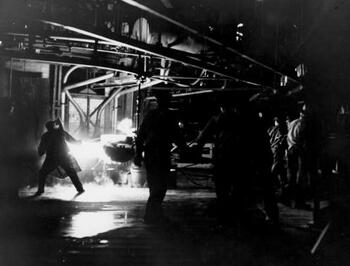Pouring the 200 inch disk at Corning Glass Works
Cover Image:

Ladle used during pouring of 200 inch disk, 1934 - Image Source
Collection Facts
Extent:
20
Dates of Original:
c. 1934 - 1937
Browse within this collection
Additional Information
Scope and Content Source:
Browse similar collections
Collection Type: